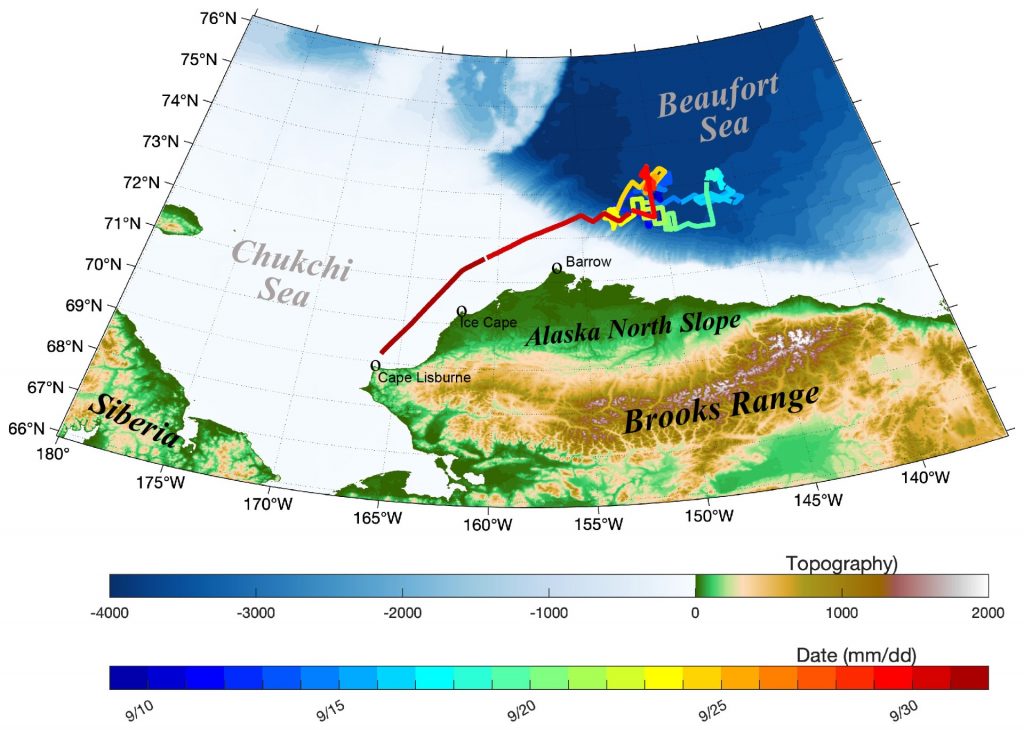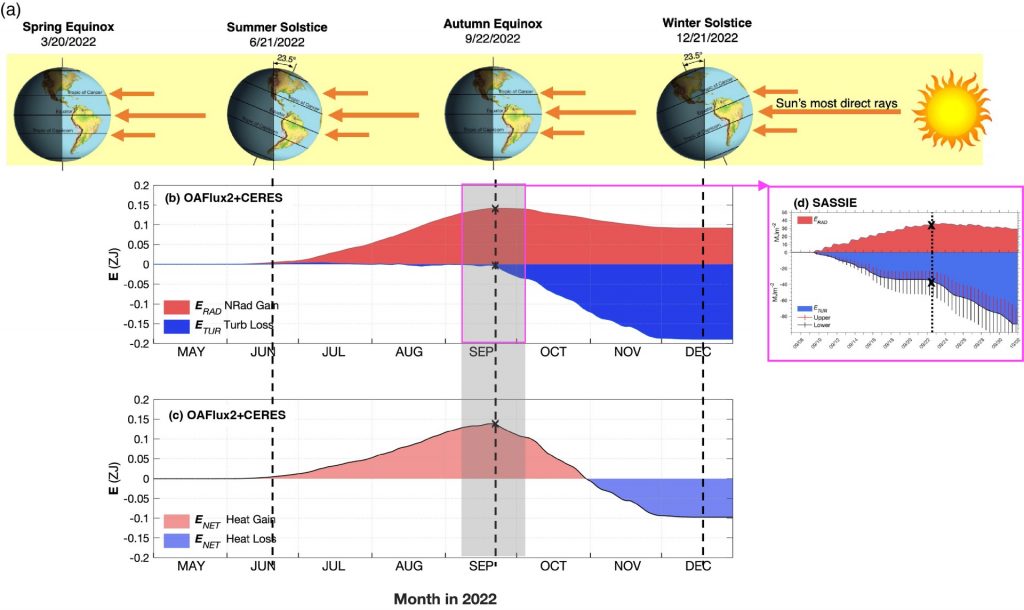Carrigg, J., Yu, L., Menezes, V. V., & Chen, Y. (2024). Autumnal Equinox shift in Arctic Surface Energy Budget: Beaufort-Chukchi Seas Case Study. Journal of Geophysical Research: Oceans, 129(5), e2023JC020788. https://doi.org/10.1029/2023JC020788
This study examines the annual cycle of the Surface Energy Budget (SEB) in the Beaufort-Chukchi seas (Fig.1), focusing on the autumn transition. Shipboard measurements from NASA’s Salinity and Stratification at the Sea Ice Edge (SASSIE) experiment (8 September–2 October 2022) and satellite flux analysis for the entire 2022 were utilized to provide a comprehensive perspective of the SEB’s seasonal dynamics. An important finding (Fig.2) is the alignment of SEB’s autumnal transition with the September 22 equinox, marking the onset of prolonged Arctic darkness. This transition involved a shift from the summertime radiative heating to cooling conditions, characterized by outgoing longwave radiation surpassing incoming solar radiation and a notable increase in synoptic turbulent latent and sensible heat flux variability. The increased turbulent heat fluxes after the equinox were associated with increased occurrences of short-duration cold air outbreaks. These outbreaks seem to originate from cold mesoscale surface winds transitioning from cooling landmasses or ice caps to the warmer seas, driven by differential cooling rates between land/ice and ocean as solar irradiance declined. Turbulent heat losses, outpacing longwave emission by more than fivefold, accelerated ocean surface cooling in the subsequent 2 months, leading to the complete freeze-up of the Beaufort-Chukchi seas by late November. These findings underscore the substantial influence of astronomical seasons on the SEB, emphasizing their crucial role in Arctic climate dynamics.

Fig. 1. Topographical and bathymetrical map of the Beaufort and Chukchi seas region in the Arctic circle (66.5°N). The route taken by the SASSIE field experiment ship from September 8th to October 2nd, 2022, is superimposed and color-coded based on the date. Image created by Lisan Yu.
Fig.2 (a) Schematic representation of the Earth’s axial tilt and its relation to the Sun over the course of the four astronomical seasons, with the start dates shown for the Northern Hemisphere in 2022. The Earth’s axial tilt at about 23.5º regulates the angle at which solar rays strike the Earth's surface and the consequent duration of daylight in the Arctic Circle (66.6ºN). Image created by Lisan Yu.
Panels (b) and (c) show the change in heat energy transfers (Unit: zetta joules (ZJ)) from May to December 2022 integrated over the Beaufort-Chukchi seas area. Vertical dashed black lines mark the start of the astronomical seasons, including Summer Solstice, Autumnal Equinox, and Winter Solstice. In (b), ERAD (red) is net radiative heat energy, ETUR (blue) is turbulent heat energy (ETUR). In (c), ENET is net heat energy (sum of radiation and turbulent fluxes), with positive (negative) values indicating oceanic heat gain (loss).
Panel (d) shows ERAD and ETUR integrated along the SASSIE route. These shipboard-observed energy shifts align with the broader seasonal heat exchange patterns of the Beaufort-Chukchi seas area as depicted in panels (b) and (c).

